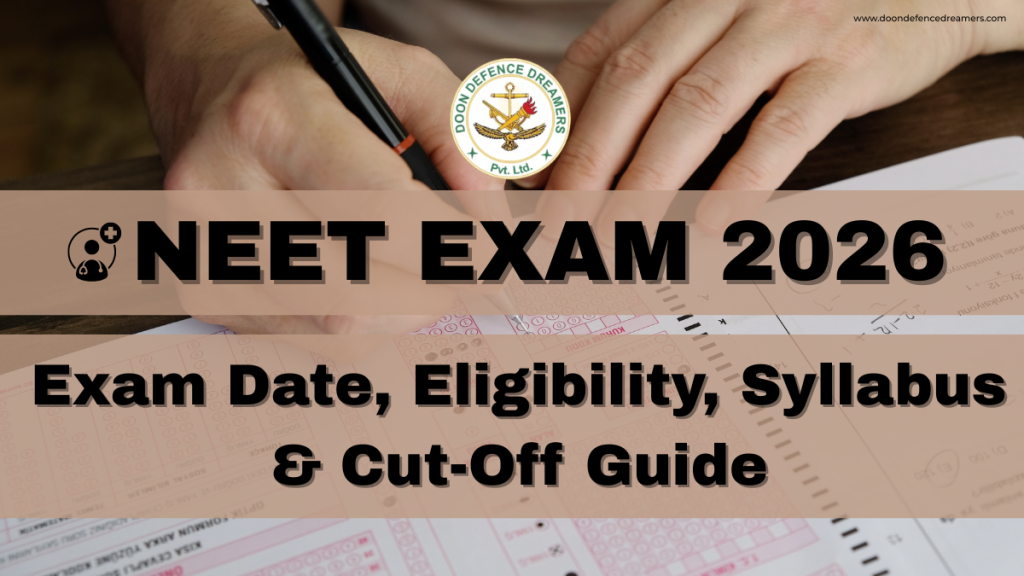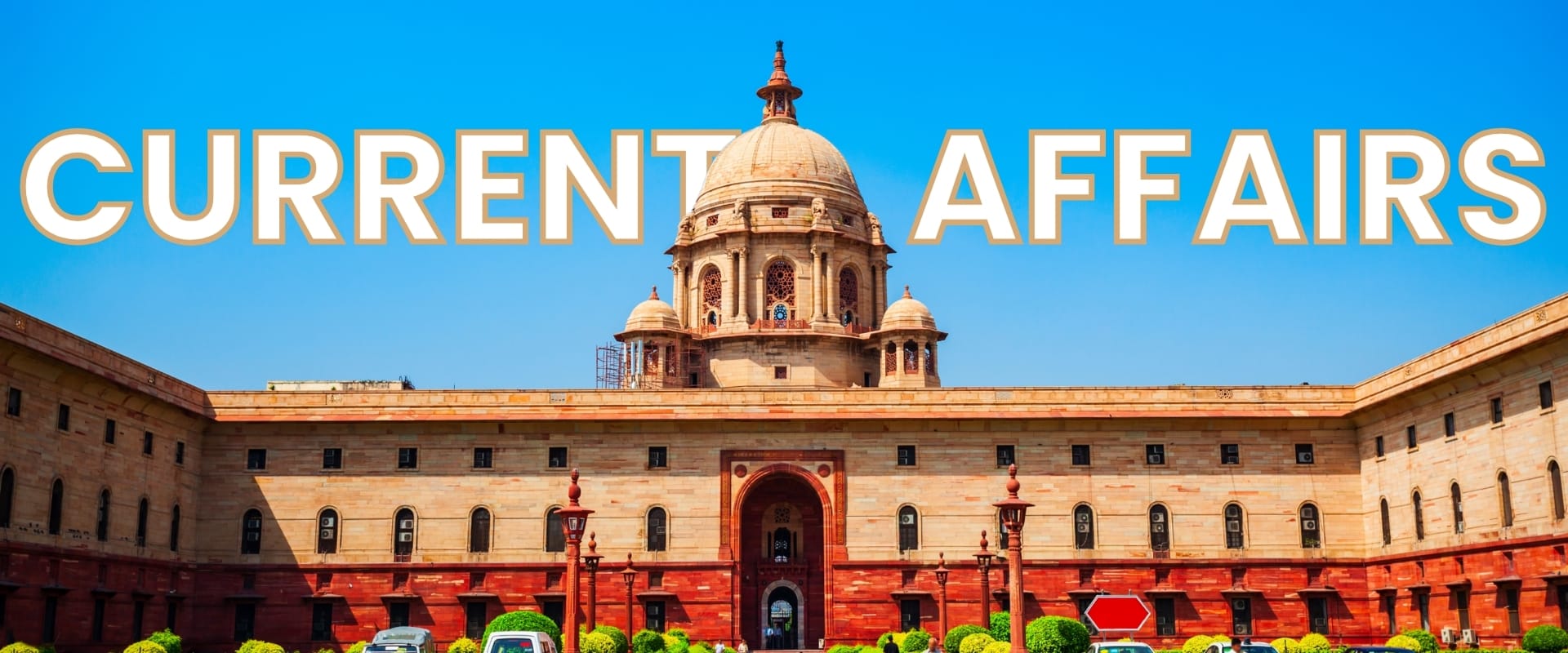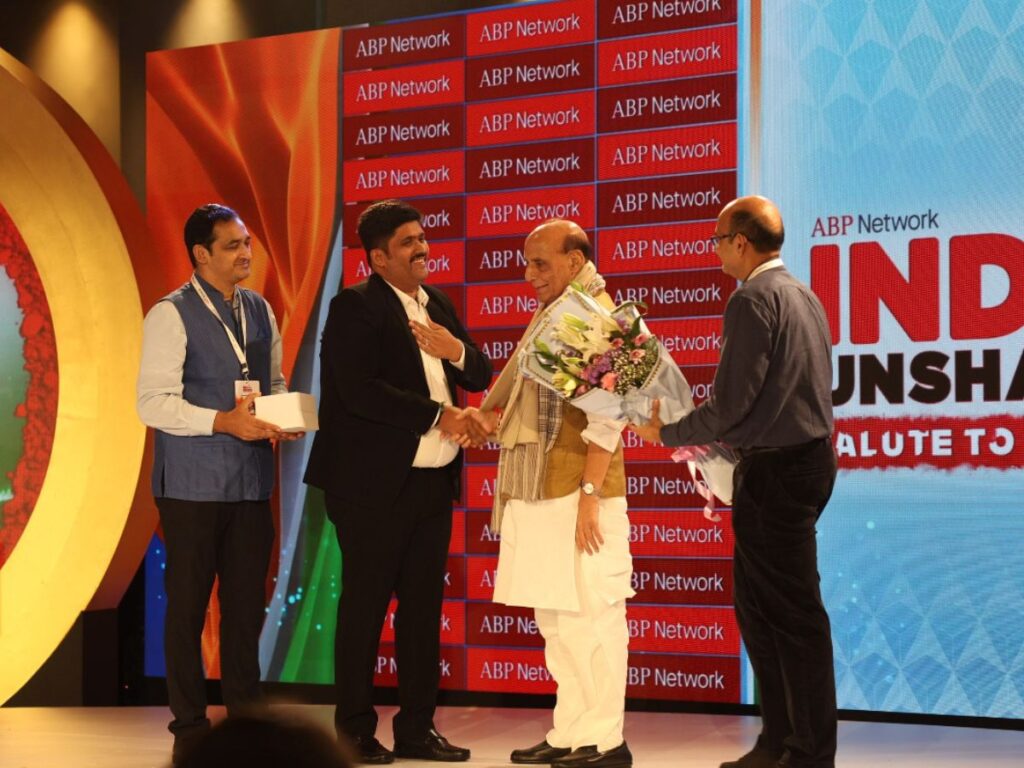NEET 2026 marks the most important milestone for medical aspirants in India. More than 22 lakh students will compete for limited seats in this tough exam. The exam’s format will see a fundamental change from traditional pen-and-paper to Computer-Based Test (CBT). This historic transformation will reshape how students take the exam.
The exam will likely take place on May 2026’s first Sunday, based on past schedules. NTA should make the official announcement by this year’s end. NEET 2026’s complete syllabus covers Physics, Chemistry, and Biology. Students need proper preparation because NEET remains one of India’s toughest entrance tests. The registration dates will determine students’ chances to enter 542 medical colleges, 313 dental colleges, 914 AYUSH colleges, and 47 BVSc & AH colleges that use NEET scores.
This piece covers everything about NEET 2026. You’ll learn about eligibility rules, how to apply, detailed subject topics, expected cut-offs, and ways to prepare better. Last year’s exam saw only 12.3 lakh students qualifying from over 23 lakh registrants. Success demands a clear understanding of the exam’s details now more than ever.
NEET 2026 Exam Overview and Key Dates
The National Testing Agency (NTA) maintains a specific timeline to conduct the National Eligibility cum Entrance Test (NEET). Medical aspirants can use this comprehensive timeline and key information about NEET 2026 to plan their preparation effectively. This compilation draws from historical patterns and trusted sources.
Tentative NEET 2026 exam date
NEET UG 2026 will likely take place on May 3, 2026 (Sunday). This date aligns with the usual pattern of scheduling the exam on May’s first Sunday. Students will have 3 hours to complete their paper, from 2:00 PM to 5:00 PM IST.
The exam day schedule looks like this:
- Reporting to examination center: 1:15 PM onwards
- Last entry to exam hall: 1:30 PM
- Verification of admit cards: 1:30 PM to 1:45 PM
- Distribution of exam booklets: 1:45 PM
- Filling particulars in booklet: 1:50 PM to 2:00 PM
- Exam commencement: 2:00 PM
- Exam conclusion: 5:00 PM
NTA will release the official notification in January or February 2026. Students should start preparing based on this tentative schedule.
NEET 2026 registration date and deadlines
The registration window opens in the first week of February 2026. Students need to complete their online applications through the official NTA website (neet.nta.nic.in). The process usually stays open for a month, with applications closing in the first week of March 2026.
NTA provides a correction window in March 2026. This window lets students fix any errors in their submitted applications. No changes are possible after this period ends.
The expected fee structure remains:
| Category | Fee (in INR) |
|---|---|
| General | 1,700 |
| GEN-EWS, OBC-NCL | 1,600 |
| SC, ST, PWBD, Third Gender | 1,000 |
| Candidates Outside India | 9,500 |
Students should gather all required documents before starting their registration to avoid delays.
Timeline for admit card, result, and counseling
Students can download their admit cards in late April 2026, about two weeks before the exam. Some sources indicate availability 3-4 days before the exam. The official website will host these admit cards, and students must verify all details carefully.
The post-examination schedule continues:
- Provisional Answer Key Release: First week of June 2026
- Final Answer Key Release: Mid-June 2026
- Result Declaration: Second or third week of June 2026
- Counseling Process Begins: July 2026
- First Round of Counseling: Third week of July 2026
- Second Round of Counseling: Second half of August 2026
- Mop-up Round: September to October 2026
- Stray Vacancy Round: September to October 2026
The counseling phase starts within a month after result announcement. Seat allocation happens through multiple rounds based on candidate ranks.
A detailed cutoff analysis comparing 2025 and 2024 scores will appear in a separate section of this piece. This will help students understand their competition better in 2026.
NEET attracts more than 15 lakh students each year. Understanding this timeline helps students prepare better and navigate one of India’s toughest entrance exams successfully.
Eligibility Criteria for NEET 2026
You need to know if you qualify for NEET 2026 before you start preparing. The National Testing Agency (NTA) has set specific requirements that medical students must meet to take this prestigious examination. Here are the key factors that determine your eligibility for NEET 2026.
Minimum academic qualifications
The National Medical Commission requires specific educational qualifications to qualify for NEET 2026. You need to complete or appear for your 10+2 examination (or equivalent) from a recognized board with Physics, Chemistry, Biology/Biotechnology, and English as core subjects.
Your category determines the minimum marks needed in Physics, Chemistry, and Biology/Biotechnology (PCB):
| Category | Minimum Required PCB Aggregate |
|---|---|
| General/Unreserved | 50% |
| OBC/SC/ST | 40% |
| PwD (General) | 45% |
Students who will take their qualifying examinations in 2026 can apply provisionally. Remember that mathematics marks don’t count for NEET eligibility. You must pass all subjects individually in both theory and practical examinations.
Age limit and number of attempts
NEET 2026 age requirements have changed from previous years. Current guidelines state that candidates must be 17 years old as of December 31, 2026. This means your birth date should be on or before December 31, 2009.
The biggest change over the last several years is that there’s no upper age limit anymore. Earlier, NEET had age restrictions, but now anyone can apply if they meet other eligibility criteria. This makes the exam available to people of all age groups.
Since 2018, NTA lets you take NEET as many times as you want. You can keep trying until you get into medical school. This gives students multiple chances to improve their scores and fulfill their medical career dreams.
Nationality and OCI/foreign student rules
NEET 2026 welcomes more than just Indian nationals. Five types of candidates can take the examination:
- Indian Nationals
- Non-Resident Indians (NRIs)
- Persons of Indian Origin (PIOs)
- Overseas Citizens of India (OCIs)
- Foreign Nationals
NRI and OCI/Foreign students must meet the same academic requirements as Indian nationals. They need education equivalent to 10+2 with Physics, Chemistry, Biology, and English from a recognized board.
International applicants need extra documents. NRI and OCI applicants must submit a certificate from their country’s Indian Diplomatic Mission to prove their status. Foreign applicants need to show relevant passport pages or a certificate confirming their citizenship.
Foreign-educated candidates might need an equivalency certificate from the Association of Indian Universities (AIU) if they studied under a foreign board. These students can apply for All India Quota seats and deemed universities, but state quota eligibility varies by state rules.
Meeting these eligibility criteria is your first vital step toward NEET 2026. Make sure you qualify before registration starts. This way, you can focus on preparing for this competitive exam without worrying about disqualification.
NEET 2026 Application Process Explained
Your NEET 2026 application submission is your first big step to achieve your medical career dreams. More than 20 lakh candidates are expected to register. Learning about the application process will give you an edge in the competition. The official NTA website is the only valid platform to submit applications.
Step-by-step registration guide
NEET 2026 registration starts in the first week of February and stays open until the first week of March. Here’s a complete guide to help you register:
- Visit the official NTA website (neet.nta.nic.in) and click on “New Registration”
- Read the instructions and accept the terms by checking the required box
- Enter your simple details including name, email address, and mobile number
- Create a strong password and select a security question with answer
- Verify your identity through OTP sent to your registered contact details
- You’ll get a unique application number and password after verification
- Log in using these credentials to access and fill the complete application form
- Enter all required information (personal, educational, exam center priorities)
- Upload the necessary documents in specified formats (details in next section)
- Review all information before final submission
- Pay the application fee through available online methods
- Download and save the confirmation page for future reference
NTA usually provides a correction window to edit certain information in your application form if needed. This is a valuable but limited chance, so check all details carefully before your original submission.
Documents required for application
Getting your documents ready beforehand makes the application process quicker. Keep these documents ready in both digital and physical formats:
Essential documents:
- Recent passport-size photograph (10KB-200KB, JPG/JPEG)
- Postcard-size photograph (4″×6″, 10KB-200KB, JPG/JPEG)
- Scanned signature (4KB-30KB, JPG/JPEG)
- Left and right-hand thumb impressions (10KB-200KB, JPG/JPEG)
- Class 10th marksheet and passing certificate (50KB-300KB, PDF)
- Class 12th marksheet (for those who have completed)
- Valid ID proof (Aadhaar card preferred)
Category-specific documents:
- Category certificate for SC/ST/OBC/EWS candidates
- PwBD certificate for differently-abled candidates
- Domicile certificate
- Citizenship or Embassy certificate (for NRI/OCI/Foreign candidates)
Your photograph should show 80% of your face against a white background. Sign on white paper with black ink and avoid capital letters. All uploaded documents must meet size and format requirements or your application might get rejected.
Application fee by category
You must pay the application fee online through debit/credit cards, net banking, or UPI. Here’s the expected fee structure for NEET 2026:
| Category | Fee (in INR) |
|---|---|
| General | 1,700 |
| OBC/EWS | 1,600 |
| SC/ST/PwD | 1,000 |
| Foreign Nationals | 9,500 |
Keep in mind these amounts don’t include GST and bank processing charges. The application fee won’t be refunded under any circumstances. Check your eligibility before making the payment.
The system generates a confirmation page after successful payment – this proves you’ve completed your application. Download and save this page with the payment receipt as you might need them later during admission.
Following these steps carefully and submitting your application on time will help you complete the first milestone on your path to becoming a medical professional through NEET 2026.
NEET 2026 Syllabus and Subject-Wise Breakdown
Becoming skilled at the NEET 2026 syllabus needs a smart plan to handle the big subject material in Physics, Chemistry, and Biology. The National Medical Commission (NMC) hasn’t announced the official syllabus for NEET 2026 yet. Previous patterns and recent updates give us a detailed breakdown to help you prepare.
Physics syllabus: Class 11 & 12 topics
The Physics section has 20 chapters and counts for about 180 marks in the exam. Here are the most important chapters that carry high marks:
| High-Weightage Physics Topics | Average Questions | Weightage |
|---|---|---|
| Laws of Motion | 3 | 7% |
| Thermodynamics | 3 | 7% |
| Current Electricity | 3 | 6% |
| Magnetic Effects & Magnetism | 3 | 6% |
| Semiconductor Electronics | 3 | 6% |
Class 11’s Mechanics, Thermodynamics, and Waves make up about 40% of Physics questions. Class 12’s Electrostatics, Current Electricity, and Optics show up often in the exam.
Chemistry syllabus: Class 11 & 12 topics
NEET’s Chemistry breaks down into three main parts: Physical, Organic, and Inorganic Chemistry. Each part carries about the same marks, so you need balanced preparation.
Important topics and their weightage include:
- Physical Chemistry: Mole Concept (5%), Ionic Equilibrium (4%)
- Organic Chemistry: General Organic Chemistry (4%), Aromatic Compounds (6%)
- Inorganic Chemistry: Chemical Bonding (8%), p-block elements (6%)
Chemistry adds up to 180 marks, split equally among the three branches. Students usually find this section more theoretical and score better here compared to Physics.
Biology syllabus: Class 11 & 12 topics
Biology carries the most marks in NEET with 360 marks (90 questions) split equally between Botany and Zoology. The chapter breakdown looks like this:
Botany high-weightage topics:
- Genetics and Evolution (25%)
- Ecology and Environment (16%)
- Plant Physiology (14%)
Zoology high-weightage topics:
- Human Physiology (45%)
- Human Reproduction & Reproductive Health (16%)
- Animal Kingdom (10%)
Biology makes up half of your total NEET marks, so plan your study time accordingly.
Recent changes in NEET syllabus
The National Testing Agency changed the 2025 exam pattern by removing optional questions. Now, you must answer all 180 questions in 180 minutes. The National Medical Commission hasn’t announced any new syllabus changes for NEET 2026.
The main syllabus still follows the NCERT curriculum for classes 11 and 12. It covers all the needed topics in Physics, Chemistry, and Biology as shown in the official syllabus document.
How to download official syllabus PDF
Here’s how to get the official NEET 2026 syllabus:
- Go to the official NTA website (neet.nta.nic.in)
- Click on “Downloads” or “Information Bulletin”
- Find “NEET 2026 Syllabus PDF”
- Save the document for offline use
The National Testing Agency will release NEET 2026’s official information brochure after their formal announcement. Until then, you can use the NEET 2025 syllabus since it should stay mostly the same for 2026.
The marking scheme works like this: you get +4 marks for right answers and -1 for wrong ones. Skipped questions don’t lose marks. A good grip on the syllabus will help you tackle this tough exam better.
Understanding the NEET 2026 Exam Pattern
The NEET exam’s structure shows how well you’ll perform on test day. You need to know the examination format to prepare strategically and manage time better.
Number of questions and marking scheme
NEET 2026 will have 180 compulsory questions with a strict timeframe of 180 minutes (3 hours). This format matches the pre-COVID structure that came back in 2025. The marking scheme is simple but needs strategic thinking:
- Correct answer: +4 marks
- Incorrect answer: -1 mark (negative marking)
- Unattempted question: 0 marks
You can’t change your answer once marked on the OMR sheet, so you need to be careful. Students can score up to 720 marks, which needs both knowledge and smart answering strategies.
Section-wise weightage
The exam has three major subjects distributed this way:
| Subject | Questions | Marks | Percentage |
|---|---|---|---|
| Physics | 45 | 180 | 25% |
| Chemistry | 45 | 180 | 25% |
| Biology | 90 | 360 | 50% |
Biology makes up half of the total marks. This part splits into 45 questions each for Botany and Zoology. Students who want to score above 650 marks must excel in biology.
Offline vs CBT mode: What to expect
NEET uses pen-and-paper mode right now. All the same, something big might change – the Ministry of Education might switch NEET 2026 to a Computer-Based Test (CBT) format.
Several reasons support this change:
- Better security against paper leaks
- Results process faster through automated evaluation
- Multiple sessions help manage crowds better
The change brings some worries:
- Rural students might face digital barriers
- Problems with power cuts and poor internet
- Questions about fairness across different sessions
The Ministry of Education and the Ministry of Health and Family Welfare will decide the final exam mode together. Students should be ready for both options, though they’ll get official news with the exam notification in early 2026.
NEET Year Wise Cut Off Comparison (2025 – 2020)
| Category | NEET 2025 | NEET 2024 | NEET 2023 | NEET 2022 | NEET 2021 | NEET 2020 |
|---|---|---|---|---|---|---|
| UR/EWS | 686 – 144 | 720 – 162 | 720 – 137 | 715 – 117 | 720 – 138 | 720 – 147 |
| OBC | 143 – 113 | 161 – 127 | 136 – 107 | 116 – 93 | 137 – 108 | 146 – 113 |
| SC | 143 – 113 | 161 – 127 | 136 – 107 | 161 – 93 | 137 – 108 | 146 – 113 |
| ST | 143 – 113 | 161 – 127 | 136 – 107 | 116 – 93 | 137 – 108 | 146 – 113 |
| UR/EWS & PH | 143 – 127 | 161 – 144 | 136 – 121 | 116 – 105 | 137 – 122 | 146 – 129 |
| OBC & PH | 126 – 113 | 143 – 127 | 120 – 107 | 104 – 93 | 137 – 108 | 128 – 113 |
| SC & PH | 126 – 113 | 143 – 127 | 120 – 107 | 104 – 93 | 136 – 108 | 128 – 113 |
| ST & PH | 126 – 113 | 142 – 127 | 120 – 108 | 104 – 93 | 135 – 108 | 128 – 113 |
Factors affecting cut-off scores
The yearly NEET cut-offs depend on several key factors:
- Exam difficulty level: Tougher exams usually mean lower cut-offs, just like in 2025
- Total candidates: More students can push competition and cut-offs higher
- Available seats: Medical seat numbers directly affect cut-off marks
- Highest score achieved: Top performers’ marks shape the percentile calculation
- Reservation policies: Each category has different cut-off marks based on quota systems
These elements work together each year to create unique cut-off patterns.
How to interpret qualifying vs admission cut-off
The difference between these two cut-offs matters a lot:
Qualifying cut-off: You need this minimum score to be eligible for counseling. General category students needed 144 marks in 2025.
Admission cut-off: Getting a seat needs much higher scores than just qualifying. General category students need 630+ marks for government MBBS colleges, not just the qualifying 144 marks.
General category students should aim for 160-720 marks in NEET 2026. Remember, scoring close to minimum qualifying marks won’t help you get into top colleges.
Conclusion
Preparing for NEET 2026 requires understanding all important details like exam mode, dates, eligibility, cutoff trends, and syllabus. The biggest change may be a shift from pen-and-paper to computer-based testing, so students should be ready for it. The exam is expected on the first Sunday of May 2026, giving enough time to plan preparation.
Cut-off trends show that scores change based on exam difficulty—2024 cut-off was 162 (General), while 2025 dropped to 144. However, to get into top medical colleges, students should aim for 630+ marks. Before preparing, confirm you meet eligibility criteria and submit documents correctly, as application mistakes cannot be fixed after the correction window.
The syllabus of Physics, Chemistry, and Biology is vast, so focus on high-weightage topics—especially Biology, which carries 50% of marks. With strong concepts, regular practice, understanding of exam pattern, and proper time management, candidates can clear NEET 2026 and secure admission to prestigious medical colleges.
About Doon Defence Dreamers

Doon Defence Dreamers is the best NDA coaching in Dehradun, known for producing top results every year. Along with NDA, we also provide expert coaching for CDS, AFCAT, MNS, Sainik School, and SSB preparation. Students get hostel facilities, disciplined study environment, and physical training to build complete officer-like qualities. Our dedicated faculty, updated study material, and result-oriented approach help students achieve their goals faster. With 710+ selections recently, Defence Dreamers has become one of the most trusted institutes for defence and NEET/JEE aspirants in India.





























